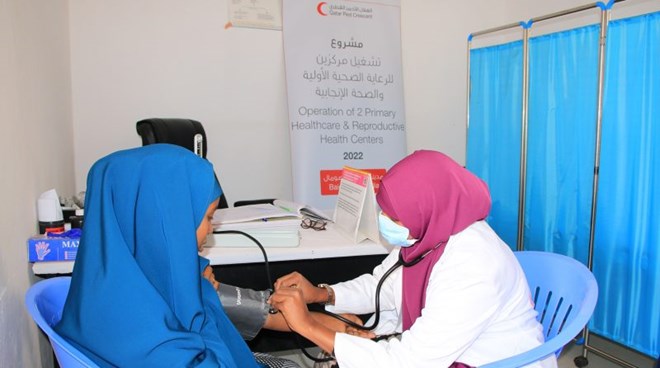Somalia is currently experiencing its worst drought in 40 years, with 40% of the population suffering from severe food insecurity.
In the Middle Shabelle Region of southeastern Somalia, the Qatar Red Crescent Society (QRCS) office provides reproductive health care through two centers.
According to the Qatar News Agency (QNA), the health centers in Somalia’s cities of Baidoa and Balaad serve at least 40,000 internally displaced persons (IDPs) and returnees.
In Somalia, a mother dies every two hours due to pregnancy problems, according to the World Health Organization (WHO). It further stated that every hour, eight Somali children under the age of five die as a result of chronic malnutrition.
As the country struggles with a severe drought, more people have been forced to flee their homes in search of food and water.
The health services are provided by QRCS through the Baidoa Health Center and the Balaad Reproductive Health Center, which were chosen after a field assessment.
The Baidoa Health Center began construction in December of last year.
The project’s 418,325 QAR goal is to lower mortality and morbidity rates in the southeastern area and its surrounding regions.
The charitable organization hopes to achieve its goal by offering free medical personnel, materials, and services in partnership with Somalia’s Ministry of Health (MOH).
Maternal and pediatric care are among the services provided by the health centers. Minor procedures are also performed at the facility, which also provide follow-up care for patients have chronic diseases.
In October last year, QRCS announced another 547,584 QAR project to provide medical services for hundreds of low-income patients in Somalia. This came after Qatar Charity inaugurated a new health centre in Somalia in August.
The centre aimed to help more than 20,000 people in need of medical assistance.
Worst drought in 40 years
Somalia has been living under a worsening drought that has also impacted the rest of the Horn of Africa, including Ethiopia and Kenya as there is an absence of rainfall.
Reuters reported last month that Somalia is facing the worst drought in 40 years.
According to the World Food Programme (WFP), Somalia is facing the risk of famine, 500,000 people are facing emergency levels of hunger in Kenya, and 7.2 million people in drought-affected areas in Ethiopia barely have food.
The WFP warned that the situation in Somalia could worsen if there is no rainfall or a lack of adequate humanitarian support. It said that some six million people in Somalia, 40% of the population, are currently facing acute food insecurity.
The drought has forced some families to leave their homes in search of food and water in other parts of the country. The UNICEF said in February that 300 families have been displaced by drought since December last year.
The UN Office for the Coordination of Humanitarian Affairs (OCHA) also said conflict and insecurity has forced 54,000 people to leave their homes in 2021 alone. More than 2.9 million people are internally displaced.
The OCHA stated that at least 1.4 million children in Somalia under the age of five are at risk of acute malnourishment, including 329,500 who are believed to be severely malnourished.
The 2022 Somalia Humanitarian Response Plan aims to gather $1.5 billion to assist 5.5 million of the most vulnerable people in Somalia. To date, $66.7 million have been allocated, making up only 4.6% of the required funding.

